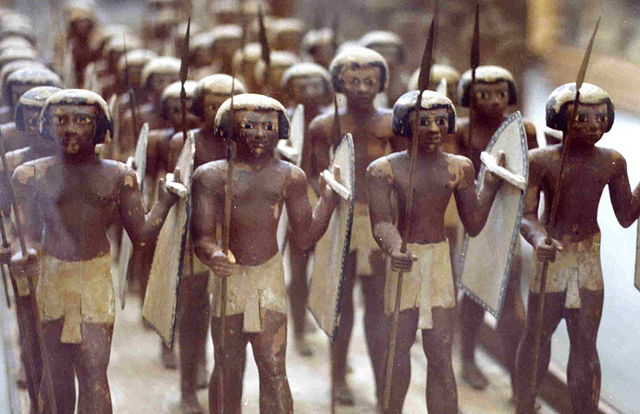Eleventh Dynasty of Egypt
The Eleventh Dynasty of ancient Egypt is a well-attested group of rulers. Its earlier members before Pharaoh Mentuhotep II are grouped with the four preceding dynasties to form the First Intermediate Period, whereas the later members are considered part of the Middle Kingdom. They all ruled from Thebes in Upper Egypt.
Funerary stele of Intef II, on display at the Metropolitan Museum of Art.
11th Dynasty model of Egyptian soldiers from the tomb of Mesehti.
11th Dynasty model of Nubian archers from a tomb in Asyut.
Image: Statue Mentuhotep aa by Khruner
Ancient Egypt was a civilization of ancient Northeast Africa. It was concentrated along the lower reaches of the Nile River, situated in the place that is now the country Egypt. Ancient Egyptian civilization followed prehistoric Egypt and coalesced around 3100 BC with the political unification of Upper and Lower Egypt under Menes. The history of ancient Egypt unfolded as a series of stable kingdoms interspersed by periods of relative instability known as “Intermediate Periods.” The various kingdoms fall into one of three categories: the Old Kingdom of the Early Bronze Age, the Middle Kingdom of the Middle Bronze Age, or the New Kingdom of the Late Bronze Age.
A typical Naqada II jar decorated with gazelles (Predynastic Period)
Early tomb painting from Nekhen, c. 3500 BC, Naqada, possibly Gerzeh, culture
The Narmer Palette depicts the unification of the Two Lands.
The pyramids of Giza are among the most recognizable symbols of ancient Egyptian civilization.








